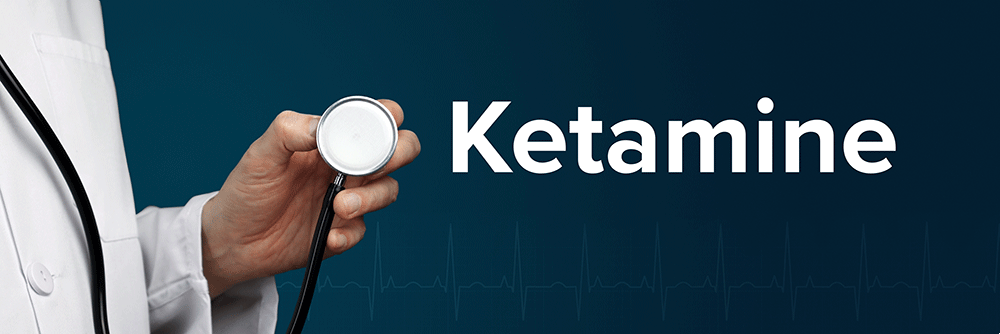ketamine
We have been providing ketamine infusions at our clinic since 2010.
Ketamine Clinic in Nagoya Anesthesiology is the first ketamine clinic in Japan for the treatment of mood disorders, OCD, and PTSD.
We are the first ketamine clinic in Japan.
Through innovative, evidence-based, compassionate methods based on our many ketamine infusion experiences since 2010,
We are committed to helping those suffering from treatment-resistant conditions.
-
1200+
IV infusion performed -
200+
Patients receiving ketamine -
82(%)
effectiveness -
0
Long-term side effects
Most intractable chronic pain is accompanied by mood disorders. (Studies show that after six months of pain, more than 80% become depressed.)
Based on post infusion evaluations of these people, 80-90% of patients with mood disorders experience symptom relief. Most people experience improvement immediately after the infusion and within a few days. There are no known long-term side effects, and short-term side effects are well tolerated and usually disappear within a day.
All of this makes ketamine infusion therapy one of the fastest, most effective, and safest mood disorder treatments available today.
Ketamine for Depression and Other Mental Disorders
The Ketamine Clinic in Nagoya, Japan offers patients a personalized approach to mental health treatment with ketamine infusions for depression, anxiety, bipolar disorder, obsessive-compulsive disorder, PTSD, and anxiety disorders.
Depression

When ketamine infusion is administered for depression, bipolar depression, postpartum depression, and dreary thoughts, rapid relief can be felt immediately and within a few days without the negative side effects associated with antidepressant medications.
Ketamine infusion for depression is very effective in treatment-resistant cases. This return to health can last for months or even years in some cases, and can eliminate the need for antidepressant medications.
Most patients also report excellent quality of relief. A true sense of well-being without the flat, numb emotions often experienced with other treatments. Treatment is safe and has no long-term side effects.
PTSD

Patients suffering from post-traumatic stress disorder (PTSD), may get more relief from ketamine infusions than from traditional medications and therapies. Ketamine therapy works effectively even in treatment-resistant cases and has no long-term side effects.
Unlike other conventional therapies, ketamine improves brain function and promotes healing in a unique way.
Most of ketamine's benefits to neuroscience are entirely new approaches to treating mental health conditions.
Treatment is safe, effective, and has no long-term side effects.
OCD Anxiety Disorder

Patients with obsessive-compulsive disorder (OCD), generalized anxiety disorder, panic disorder, and other forms of anxiety disorders can be effectively and quickly treated with ketamine infusion therapy.
Ketamine therapy helps to promote calmness in the patient's nervous system through a unique process that helps restore a healthier neurochemical balance. Some patients may experience a decrease in dependence on traditional prescription medications. Most patients enjoy an overall healthier perspective on themselves and their lives.
Treatment is safe and effective, with no long-term side effects.
To begin with, ketamine has long been commonly used in anesthesiology as an induction drug for general anesthesia.
However, it has generally been rarely used for surgical anesthesia in the past 30 years or so.
(Although I believe it is still used for induction of pediatric anesthesia, for example.)
Instead, it is still commonly used in palliative medicine (a branch of anesthesiology) for the treatment of cancer pain.
In some areas, pain clinics (also a division of anesthesiology) have been using it for some time now as a treatment for intractable pain.
I first used ketamine more than 20 years ago when I was a resident.
I was administering ketamine infusions to patients with cervical spinal cord injuries in the ICU (also a division of the Department of Anesthesiology).
The pain of spinal cord injury was complex and difficult to treat, and any treatment was ineffective, but I was finding that the ketamine infusion was effective.
I remember writing a paper about it at the time.
Next, during the same residency, I was in the emergency room (which is also a division of anesthesiology) and watched a senior doctor sew up a cut on a pediatric patient (1 or 2 years old) with intramuscular ketamine to control his consciousness and pain.
Anesthesiology is a department with five divisions (surgical anesthesia, ICU, pain clinic, emergency room, and palliative medicine),
Ketamine is used in all of them, and I have experienced all of them.
In particular, the Department of Anesthesiology at Nagoya University has often used ketamine infusion as a pain treatment.
When I was at Nagoya University Hospital, I often administered large doses of ketamine in the operating room to patients hospitalized for pain.
After opening a pain clinic at Nagoya Anesthesiology Clinic 15 years ago, I continued to provide ketamine therapy (intravenous, oral, topical, etc.) as an outpatient pain treatment. I have given ketamine infusions to more than 120 patients for a total of more than 1,000 infusions.
We have been providing this treatment as a safe, effective, and satisfactory treatment without any major problems.
With the above background, we have come to start a new ketamine therapy for mental illnesses as a company with experience and expertise in ketamine therapy.
Ketamine, an anesthetic with potent antidepressant properties, was developed by physicians at the University of Michigan in the 1960s as a safe drug to provide comfortable sedation for procedures.
Research over the past several decades has demonstrated ketamine's potential as a treatment option for treatment-resistant depression.
Ketamine is a safe option for relieving severe and persistent symptoms of depression and suicidal ideation, with the potential to relieve symptoms within days of a single injection.
Ketamine infusions can provide rapid relief from symptoms of depression and dreary thoughts. Traditionally, it can take several weeks after the infusion for patients to begin experiencing symptom relief.
With ketamine infusion, patients often experience symptom relief within hours of the infusion.
Basically, the following is the basic schedule.
Individual consultations will be discussed directly with the physician during the consultation and will be determined at the physician's discretion.
The doctor will also make the final decision on whether to accept or reject the treatment, how to continue the treatment, and the dosage.
(Please note that the patient's wishes may not be granted.)
1.Patients with treatment-resistant depression, bipolar disorder, obsessive-compulsive disorder, PTSD, or anxiety disorders who have had little response to conventional treatment or who have discontinued due to side effects.
2.Spontaneously agree to treatment
3.Not for recreational drug purposes.
4.Agree not to drive a car on the day of the visit and that they will need to be escorted to the hospital
5.Not contraindicated with ketamine (hypersensitivity, cerebrovascular disease, hypertension (>160/100), history of cerebral hypertension and severe cardiac decompensation, seizures)
6.No history of narcotic or stimulant drug use
7.No dependence on alcohol, drugs, etc.
Most patients report no particular problems during the infusion, becoming drowsy and relaxed.
Blood pressure may be higher than normal during the infusion, but this will resolve spontaneously once the infusion is complete.
Visual changes such as mild hallucinations and illusion-like experiences may occur.
The side effects are listed as nightmares in the attachment, but patients often tell us that they are thrown into space, dragged into darkness, in a silver glaze, etc.
Some pati.ents may find these nightmarish experiences uncomfortable.
It has also been reported that nausea is rarely experienced during infusion.
The patient is asked to lie on his/her back on the treatment room bed and the IV infusion is started.
The infusion itself will last about 30 minutes. After that, the patient will rest for 30 minutes.
During the infusion, oxygen saturation will be monitored to check respiratory status.
If necessary, blood pressure will be measured.
If the patient is able to go home, he or she will be sent home with a companion. If the patient is still unsteady, he or she will be asked to lie down for a while.
A nurse is always nearby to support the patient.
Basically, it is fixed, but it can be adjusted at the discretion of the physician.
In the U.S., 0.5 mg/kg is mainly administered, but in our experience, that dose is not necessary for Oriental people.
Low doses are beginning to be studied in the U.S. as well.
There are many individual differences in sensitivity to the effects of the drug, and those who are more susceptible to the effects of the drug often show good results even at 5 mg (0.1 mg/kg).
The physician will determine the optimal dose for the patient.
One set of 6 infusions (2-3 weeks) is standard. Three infusions may be given to evaluate efficacy (1-2 weeks). Thereafter, the patient may receive an infusion once a month as maintenance therapy. Sometimes an infusion may be given when the condition worsens. In our clinic, you can try one infusion at first. Often, however, the second or third infusion is more effective.
There were not many reports, but an Indian case report published online on 2022.12.30 shows that it was effective.
「Successful use of ketamine to treat severe depression with suicidality post-COVID-19 – A case report」
Psychiatry Research Case Reports Volume 2, Issue 1, June 2023
Usually a set of 3 to 6 sessions is required.
Thereafter, maintenance therapy is once or twice a month or once or twice a year when the patient is not feeling well.
One infusion is 200,000 yen (tax included).



